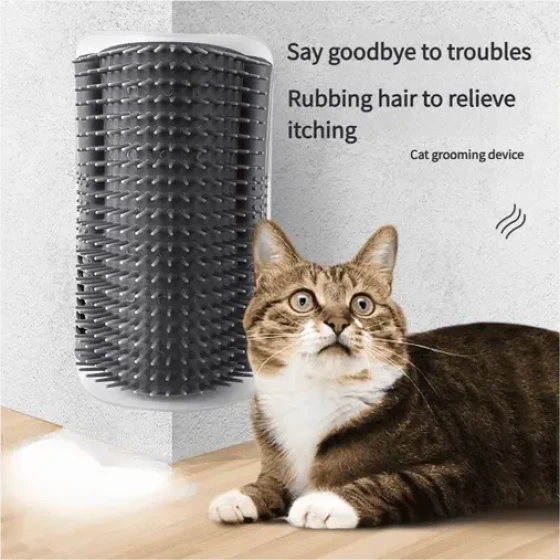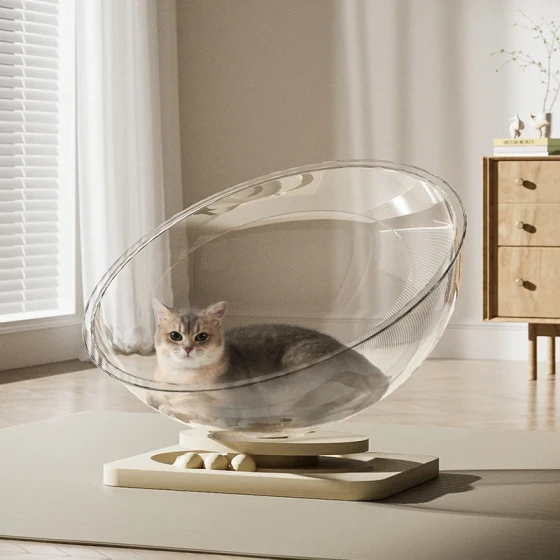Train Cats Not to Get on the Bed or Scratch Furniture

Cats like to crawl under the covers on the bed to sleep. Many cat owners often share the bed with their cats, which are harmful cat-keeping methods and unhygienic habits that should be completely changed. Since some cat diseases such as dermatophytosis, lice, and toxoplasmosis can easily be transmitted to humans, it is very necessary to train cats not to get on the bed or under the covers.
Cats should be trained to develop the habit of sleeping in their own special cat bed. Before training, a particularly comfortable bed should be prepared for the cat, and in winter, a hot water bottle can be placed inside it. If after these measures the cat still refuses to sleep in the bed, a cover can be placed over the bed to prevent it from escaping. After several training sessions, the cat will no longer run out, and of course will no longer crawl under the covers.
If the cat has already developed the habit of getting on the bed and under the covers, the following methods can be used to correct it:
Direct Punishment Method: When the cat gets on the bed or crawls under the owner's covers, immediately pat the cat's buttocks with your hand, or hit the cat with a rolled-up newspaper or book, and scold loudly to drive the cat off the bed. At this time, the owner's attitude must be strict and show anger. Because cats are very sensitive to their owner's emotions, as long as the owner shows annoyance, the cat will not dare to get on the bed or crawl under the covers again. After repeatedly doing this several times, the cat’s undesirable habit of getting on the bed can be corrected.
Long Distance Punishment Method: Prepare a bamboo water spray gun or a toy water gun filled with water in advance. When the cat attempts to jump on the bed, the owner stays hidden where the cat cannot see and sprays water at it. The cat will immediately run away after being suddenly hit by the water. After this water spray punishment a few times, the cat will develop an aversive conditioned reflex toward the bed and will no longer get on it.
Electric Shock Method: Charge a battery capacitor and place the electrodes where the cat usually sleeps on the bed. The owner controls the switch of the battery capacitor. The owner first lies on the bed pretending to sleep, and when noticing the cat on the bed, immediately presses the switch. Because the electric shock can immediately knock the cat down, generally after one electric shock, the cat will develop an aversive conditioned reflex to the bed and will not get on the bed again.
Train Cats Not to Scratch Furniture:
Cats love to claw at objects such as tree trunks or wooden items. Sometimes they also scratch on the floor. When cats claw objects, they have the habit of secreting a sticky scented liquid, which they spread on the surface of the scratched object. The smell of this secretion attracts them to come back to claw the same spot again. For house cats, if training is not carefully conducted, they often damage furniture or floors by scratching.
Before training, a wooden post about 70 cm long and 20 cm thick should be prepared and fixed upright near the cat’s bed to facilitate scratching. The wood post should be solid. During training, bring the kitten in front of the post, hold the cat’s two front legs with both hands, and place its front paws on the post to simulate scratching behavior. This way, the secretions from the cat’s paw glands will spread on the post. After multiple training sessions, and aided by the attracting smell of the secretions, the cat will go to the post to scratch and develop the habit, and will no longer scratch the furniture.
For cats that have already developed the habit of scratching furniture, during training first cover the furniture prone to scratching with plastic sheets or wooden boards, then place a solid wooden post or plank in an appropriate spot in front of the furniture. Then use the same method described above to train the cat to scratch the post or plank. After the cat forms the habit of scratching the post or plank, the post or plank can be slowly moved to the desired location. Each time the post or plank is moved, the distance should not be too far, ideally 5 to 10 cm, and must not be rushed.





